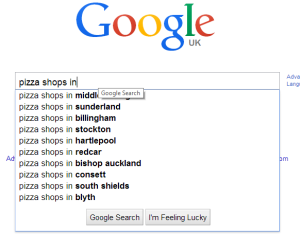Emotional Independence: How To Be Happy on Your Own

Google’s auto-complete function, Google Suggest, ostensibly anticipates your search queries. It offers suggestions based on the global or local popularity of the search term.
The suggestions, humorous as they may be sometimes, are intended to save you the time spent typing otherwise long queries. You can also quickly finds your favourite search queries from your Web History records.
But there is more to Google Suggest than its function as a time saving tool to improve usability. From a marketer’s perspective, Suggest offers opportunities for local optimization, onsite SEO improvements and predicting or at least, understanding users’ search behaviour.
According to the Big G, search predictions are mainly algorithmically deduced from factors such as how popular a search term is. So the more the number of web users search for a term, the higher the chances that term will be suggested for related searches.
Significant global events typically result into many people searching for specific terms. For example, the disappearance of the Malaysia plane, which is trending news with a lot of international interest, has influenced search terms and suggestions related to “Malaysia” and “disappeared.” For example:
The frequency of previously searched terms also influences the suggestions offered when searching related terms. Suggestions based on frequent previously searched terms are available to the user if his Web History function is turned on.
Location also plays an important role in the way Google serves both search results and related suggestions. As part of the Google Latent Semantic Search function, both the location and the search words used will affect the suggestions served. For example, searching for the term “pizza shop” under google.co.uk will provide only broad suggestions, while searching using the terms “pizza shop in” will offer more location specific suggestions. Look at the example below:

Suggestions can have both a positive or negative impact on your brand. Of course, it all depends on which side of the fence you are seated. Undeniably, the Google suggest function intentionally or unintentionally favours big-league brands. Just typing in the search term “pizza” on google.com inevitably brings “Pizza Hut” as the top suggestion. This is great brand awareness for Pizza Hut, especially among mobile users who typically tend to use the first suggestion offered on the small screen SERPs.
Combined with social signals from Google+ and other major platforms such as Twitter, a brand, whether small or big, could also reap Google’s Suggest brand awareness benefits. For example, a marketer effectively popularizes a brand on Twitter or Google+ using hashtags and related keywords. There is an increased chance that the hashtags and phrases related to the brand will trend as the auto-complete suggestion for the duration that the brand trends on social media.
Although Google has not been forthright about the impact of social signals on search results, there is increasing evidence that social activity is indeed determining search results to an extent.
Statistics show that 94% of smartphone owners use their mobile devices to look for information about local businesses. Up to 84% of these users take action after looking up a business. This includes calling up for inquiries, checking in, or making a purchase.
You can change the results and thus the suggestions Google serves you by changing your location on a desktop. However, this is not possible on smartphones, due to the geo-location sensibilities of smart mobile devices. Invariably, the results and suggestions offered from mobile searches are always location based. So if you are in London and you search for “Pizza” from a tablet, the results will display pizza places in London.
Importantly, businesses that have claimed a Google Places business page gain more prominence in local mobile search results. Mobile users are highly likely to opt for the first few suggested pizza places. Onsite-page optimization should accompany a business’s placement on Google Places. A step in the right direction is creating a separate mobile responsive website. Onsite page optimization includes doing local SEO using competitive keywords that local customers are using to find your business or similar businesses locally.
Surprisingly, a lot of marketers overlook Google Suggest as a helpful resource for building a keywords database. Well, we could chalk it up to the fact that occasionally some of the suggestions are flat out ridiculous or unrelated.
Even then, there are some hidden keyword gems that can help boost your content’s visibility. Ideally, the suggestions offered when you type a search term are equally popular terms that people are using. In other words, look at the suggestions as green lights that are giving you indications of user behaviour and what people are looking for the most.
The first step in using Google Suggest to grow your keyword database is using Google Analytics to determine the keywords that are bringing you the most traffic. Use these keywords to generate suggested keywords that your readers could be using to find your content. The idea is to use the suggested terms as longtail keywords that can attract more traffic to your targeted pages in the long run.
Google Suggest does improve usability for Google’s customers. Yet, subtle as it may be, marketers have significant opportunities to use this tool to improve their SERP visibility and to tap into the growing mobile user-base globally.






When you visit any web site, it may store or retrieve information on your browser, mostly in the form of cookies. Control your personal Cookie Services here.